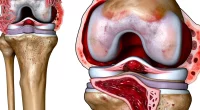Chronic viral hepatitis
What is viral hepatitis?
Viral hepatitis is a group of infectious and inflammatory liver diseases caused by hepatitis viruses A, B, C, D, and E. Each of them has a direct or indirect damaging effect on hepatocytes, which leads to impaired function of the organ and, in some cases – to the development of serious, sometimes life-threatening complications (cirrhosis, liver cancer). This disease can end with recovery or become chronic, harming the patient’s body for many years.
About the disease
Viral hepatitis affects people on every continent – to date, the number of people affected exceeds 500 million people of all ages.
Some variants of infection (hepatitis A, E) are acute, while others (hepatitis B, C, D) are more often characterized by a chronic course. Some (hepatitis A) pass without trace, others (especially hepatitis C) in the absence of timely antiviral treatment lead to cirrhosis of the liver and failure of the functions of this organ.
Types of viral hepatitis
By the nature of the course of acute and chronic viral hepatitis, each of which can occur in clinically mild, moderate, severe, or fulminant form.
Depending on the symptoms, viral hepatitis can be differentiated to:
- Manifested (jaundiced and jaundice-free).
- Asymptomatic (no external manifestations, but changes in blood tests and infection markers are detected).
- Inapparent (no external manifestations, biochemical blood test is normal, and specific markers of infection are detectable).
According to the severity of the inflammatory process in hepatocytes, there are 4 degrees of its activity:
- minimal;
- low;
- moderate;
- high.
Symptoms
As a rule, these diseases occur with subtle manifestations or without them at all, but in some cases, they develop clinically vivid forms of viral hepatitis.
Signs of illness:
- decreased efficiency, weakness, rapid fatigue (a person becomes unable to perform physical exertion, which he used to perform with ease);
- emotional instability – irritability, tearfulness, unreasonable mood swings, the tendency to low mood;
- change in the shade of physiologic secretions (dark urine, light-colored feces);
- nausea, vomiting, decreased appetite, stool consistency disorders;
- pain of varying intensity on the right side under the ribs, a feeling of discomfort, and heaviness in this area;
- expressed in varying degrees of yellowing of the whites of the eyes, mucous membranes of the nasal cavity, mouth, and skin;
- volatile joint pain;
- restless sleep;
Palpation or instrumental examination may reveal enlargement of the liver, spleen and intra-abdominal lymph nodes.
Decompensation of the pathological process will be evidenced by decreased body weight, skin itching, the tendency to bleed, the specific odor of breath, and increased abdominal size due to accumulated fluid in the abdominal cavity (ascites). Neurological symptoms (shaking of hands and feet, lethargy, impaired consciousness up to coma) are possible.
Causes of viral hepatitis
The causative agents of these diseases are viruses of the same name, the genetic material of most of which is represented by RNA, in the case of hepatitis B – DNA.
Hepatitis A and E viruses enter the body through contaminated water, food, or unwashed hands (fecal-oral transmission). Less commonly, infection may occur through transfusion of infected blood or sexual transmission.
Hepatitis B, C, and D are mainly transmitted with blood, in which they live for a long time, even outside the human body. Infection occurs during transfusions of untested donor blood or when using unsterile medical instruments or instruments for cosmetic procedures (manicures, ear piercing, tattoos). Vertical (from infected mother to fetus) and sexual transmission are less common.
Diagnosis
Diagnosing viral hepatitis begins with a conversation between the doctor and the patient, during which the specialist clarifies complaints, clarifies the order of appearance of symptoms and their changes over time, and collects anamnesis of the disease and the patient’s life.
The next step on the way to diagnosis is an objective examination. The doctor examines the patient, pays attention to the physique, skin color, and the presence of rashes or varicose veins, and conducts palpation and percussion (palpation and tapping the boundaries of internal organs), which can detect an enlarged liver and spleen, and other changes.
The data obtained allow the specialist to make a preliminary diagnosis – to suspect any of the viral hepatitis. The laboratory and instrumental diagnostic methods results will help him be sure of his assumption. The patient will beprescribed:
- general blood analysis (in hepatitis may be found leukopenia, lympho- and monocytosis, neutro-, thrombocytopenia, decreased ESR);
- general urinalysis (protein, erythrocytes, and cylindrical epithelium may appear);
- blood biochemical study (concentration of liver enzymes – AsAT, AlAT, GGT, alkaline phosphate, PTI);
- biochemical examination of urine (content of direct bilirubin, urobilin);
- EGD (to detect esophageal varices, the state of the mucous membrane of the organs under study);
- PCR blood test (the most accurate method, which will show the fact of the presence of genetic material – DNA or RNA – viruses in the biomaterial under study, if necessary – will indicate its amount);
- abdominal ultrasound;
- MRI of the liver;
- Fibroscan (assesses the amount of fibrous tissue in the liver structure);
- Blood ELISA (will detect specific antibodies to a particular hepatitis virus).
Treatment
Treatment of acute viral hepatitis, running in a mild form, can be carried out at home at the patient’s home, provided that the patient conscientiously adheres to a half-bed or bed rest. Variants of moderate severity and severe disease should be hospitalized in an infectious disease hospital, fulminant – in the intensive care unit.
Chronic viral hepatitis is subject to outpatient treatment, but in clinically significant exacerbation requires hospitalization of the patient in the hospital.
The basis of non-medical therapy is the patient’s complete refusal to drink alcoholic beverages, sufficient physical activity without overloading, compliance with dietary recommendations (sparing diet with restriction of canned, fried, fatty, spicy dishes, mushrooms, muffins, muffin products, carbonated drinks).
Medication treatment, depending on the type of infection, may include:
- antiviral drugs;
- liver protective medications;
- antioxidants;
- vitamins;
- sorbents;
- glucocorticoids.
In severe cases, patients are recommended hyperbaric oxygenation, plasmapheresis, and liver transplantation.
All these treatment options are available in more than 150 hospitals worldwide (https://doctor.global/results/diseases/chronic-viral-hepatitis). For example, liver transplantation can be done in 14 clinics across Germany (https://doctor.global/results/europe/germany/all-cities/all-specializations/procedures/liver-transplantation).
Prevention
Specific prophylaxis is developed only against hepatitis B – vaccination is carried out in the maternity hospital.
Non-specific prevention consists of observing the rules of personal hygiene, eating only well-treated thermally treated animal products and purified water, observing the rules of sterilization of instruments for medical and cosmetic manipulations, refusing promiscuous sexual relations, using barrier means of contraception during sex, fighting against drug addiction.
Rehabilitation
Persons with acute viral hepatitis should be seen by a general practitioner, infectious disease specialist, hepatologist, or gastroenterologist for at least six months, with monthly check-ups and follow-up examinations.
Patients with chronic hepatitis need dispensary monitoring with a doctor for life since it is impossible to recover from this pathology, and its complications can be quite severe.


